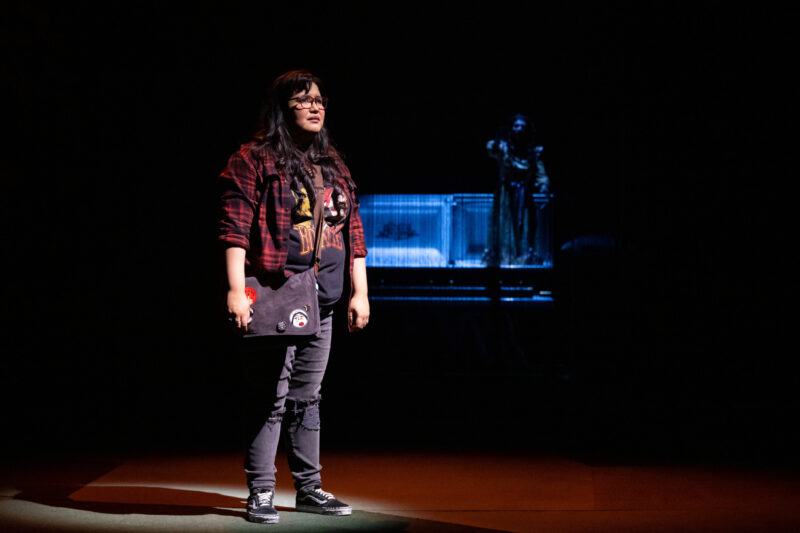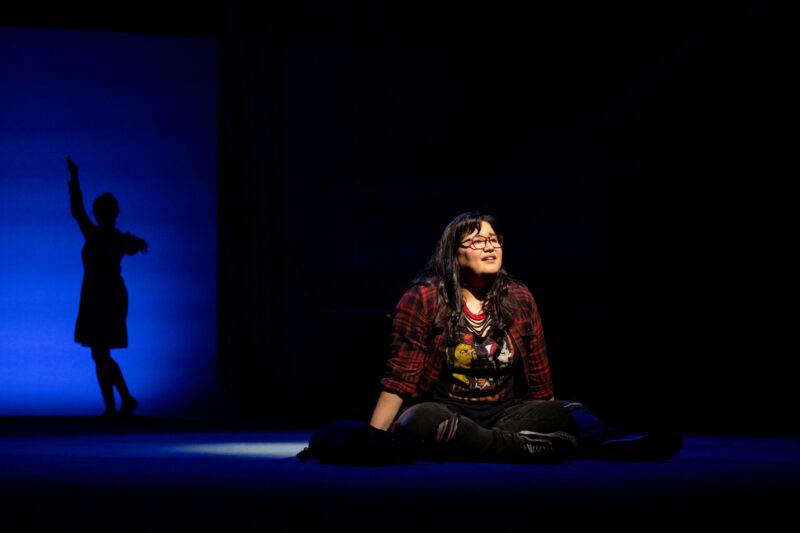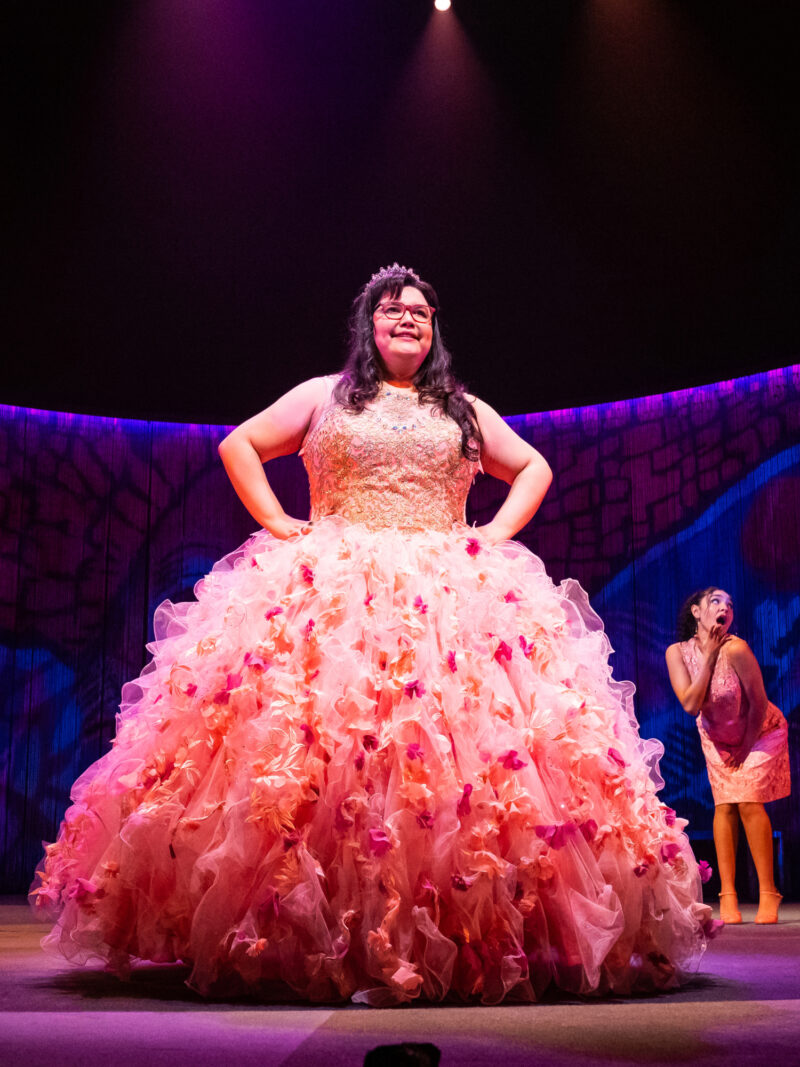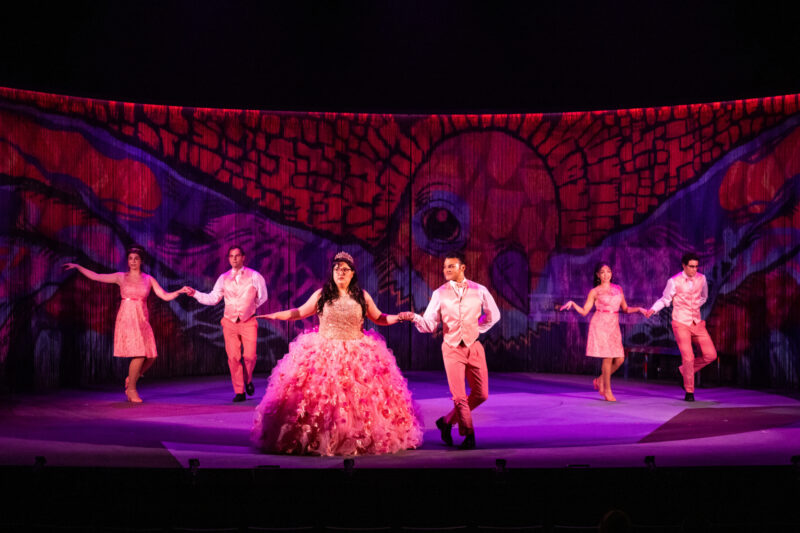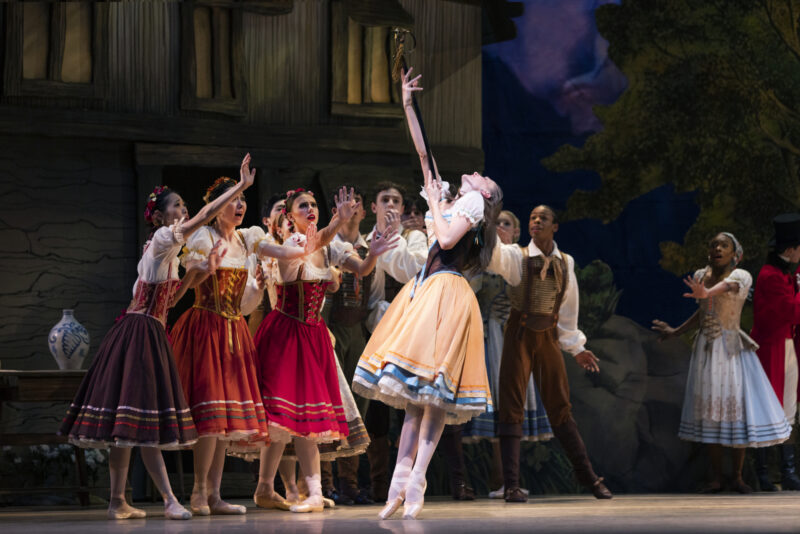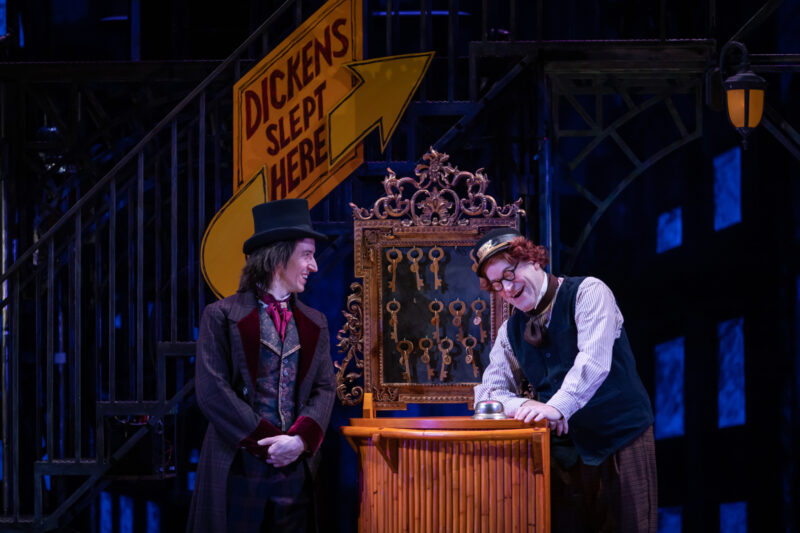An Incomplete List of Everything I’m Going to Miss When the World Is No Longer begins long before the house lights of the Theater Off Jackson start to dim. The musical, written by Dante Green and directed by Nansi Dwendi was performed by Dacha Theatre through February 11. The show kicks off silently, when the first character walks onto a corner of the stage. Their presence is an imperceptible change to the environment as the band plays behind them and the audience chatters in front of them, all while the doors in the back are still propped open for patrons to trickle in. They set down a tray of glassware and watch the audience with mild curiosity, until another character bounds on stage, still under the glare of the house lights, to speak to the first character about how excited they are for this party. More performers appear on stage, talking to each other, catching up, and giving hugs. They start interacting with the audience, too, walking up and down the aisle, introducing themselves, giving compliments, offering a pen and slip of paper to write down charades prompts, and asking audience members how they heard about the party and what they’re planning to do with their last day on Earth.
This is the essence of An Incomplete List: chaos and spirit as the show recounts the interlocking lives of an ensemble cast, told against the backdrop of the end of the world. The narratives start out knotted, told through facial expressions and exchanges that are drowned out by the din of the audience and cast. Once the lights dim and voices quiet, Micah, played by Tessa Jo, and Karina, played by Mariesa Genzale, give formal introductions, and the story begins to ricochet back and forth between the party in the present moment and fragments of the characters’ memories. The large cast and the multiple storylines means these vignettes of memory are short, usually composed of a conversation and a quick melody, and some scenes have a few different storylines sharing the stage at once, while others have one character’s dialogue overlap with another’s. Green uses this nonlinear, criss-crossing structure to contrast the relationships between characters, a variety of close friends, divorcees, mutual crushes, partners, and parents and children, against one another, and though this format makes the details of any given scene difficult to decipher, it spotlights the similarities and divergences in each character, building a picture of who each one is by comparison. Even if a scene is a mere few seconds, it will end having given the audience a greater understanding of the cast. It all amounts to a fascinating and emotional collage of scenes that slowly but surely untangle what these characters mean to one another and effectively develop the story as it gets closer and closer to the end of the world.
The cast of Dacha Theatre's An Incomplete List of All the Things I'm Going to Miss When the World is No Longer. Photo credit: Brett Love.


